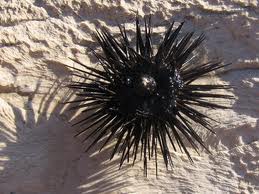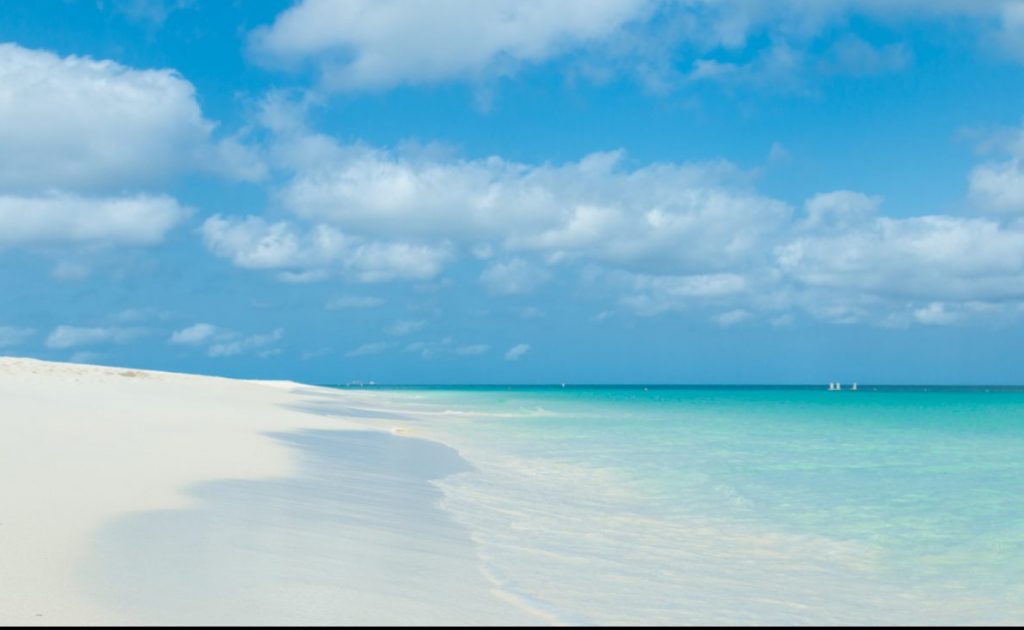Don’t worry, a rabid sea urchin is not going to leap off the reef and fling spines at you. Sea urchins are non-aggressive and relatively slow-moving. Still, sea urchin injuries are not unusual. Divers and or swimmer can easily become distracted and brush against one of these delicate creatures.
Sea Urchins Are Everywhere not only in Aruba
Sea urchin injuries are common because sea urchins are common. Swimmers encounter sea urchins in almost every body of salt water, including all of the world’s oceans. Rocky shores and shallow, sandy areas are some of the sea urchins favorite habitats. Shore divers need to take care to avoid stepping on urchins when wading shallow water.
Sea urchins are also found on coral reefs and Aruba has some predominant coral areas. Urchins hide in the reef’s crevices during the daytime. At night, they wander out to feed on floating food particles and algae. While swimmers and divers can occasionally find sea urchins during the day, night divers in particular should be careful not to accidentally touch urchins which are more exposed in the nighttime.
Sea Urchins Have Two Defense Mechanisms:
Like most aquatic life injuries, sea urchin injuries are caused by the animal trying to defend itself. A sea urchins spine is its first line of defense. The length and sharpness of an urchin’s spines vary from species to species. Some species have stubby, blunt spines, while other species have long, sharp, venom-filled spines. Razor sharp spines can easily pierce even a thick wetsuit and lodge deep in a diver’s skin.
Many urchin species, such as the purple sea urchin, have an additional defense mechanism called the pedicellarines. The pedicellarines are tiny, jaw-like structures that can clasp onto a diver’s skin and inject a painful poison. The pedicellarines are nestled down between the urchin’s spines, and are difficult for a diver to contact unless he has already impaled himself on the urchin’s spines.
In extreme cases, such as numerous puncture wounds, the relatively small amount of venom from spines and pedicellarines can accumulate to cause severe muscle spasms, faintness, difficulty breathing, and death.
Sea Urchin Stings Are Avoidable
The best way for swimmers and divers to avoid touching sea urchins is to maintain good awareness of their surroundings. Divers and swimmers should try to control their buoyancy to stay at least a few feet from coral, which may conceal urchins in its crevices. Divers should also watch out for protruding spines in the sand, as many sea urchins bury themselves. Sea urchin stings frequently happen when a diver becomes distracted (e.g. chases a turtle for a photo) and inadvertently touches an urchin.
Sometimes, conditions make it hard to see urchins to avoid touching them. One example would be a rough shore entry though waves. Thick-soles diving booties, gloves, and thick wetsuits may provide some level of protection. However, long and sharp spines may still be able to pierce thick neoprene. If a shore entry has many urchins, pick a different dive site.
First Aid for Sea Urchin Stings
Urinating on a sea urchin sting will not help, so save yourself the embarrassment. As there are two sources of injury from sea urchins, the spines and the poisonous pedicellarines, both need to be dealt with.
Spines: A sea urchin’s spines can inject painful venom. Soaking the area in hot water (110-130°F) for up to an hour and a half can break down the venom and help to alleviate the pain. Another common remedy is to soak with vinegar for 30 min -1 hour as the vinegar will also helps dissolve the spines. Spines need to be removed carefully with tweezers. Fragile spines may be crushed or broken while under the skin. If this happens, do not try to pierce the skin to get the rest of the spines. They will eventually dissolve on their own, do not dig deep at them. If a spine can not be easily removed and it is near a joint, or is close to delicate nerves and blood vessels in the hands or feet, it is best to have it surgically removed by a doctor. Dark colored spines dye the skin so that it appears that a spine remains. This coloration should disappear within 2 days, if not, see a doctor to remove the spine.
Pedicellarines: Urchin’s pedicellarines (the poisonous clasping mechanisms hidden between some urchin’s spines) can be removed by shaving the area with shaving cream and a razor.
After the removal of spines and pedicellarines, the injured area should be washed with soap and rinsed with fresh water. Topical antibiotic creams may be applied, and analgesics can be taken for the pain.
As with any aquatic life injury, patients should be monitored for signs of infections or allergies, such as chest pain or difficulty breathing. A doctor should be contacted immediately if either is observed.
Essential Health Supplies is a leading provider of medical equipment rental and health supplies in Aruba. For medical or health supplies or to book a rental of medical equipment visit www.essentialaruba.com, email:info@essentialaruba.com or call (297) 587-0940.




